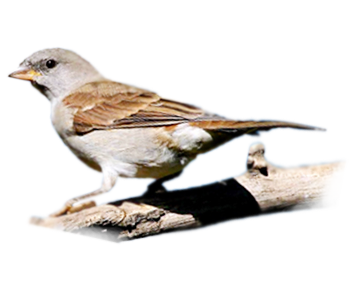
 The sparrow, especially the common
house sparrow, is one of the most ubiquitous birds on earth and is also one of the oldest
companions of human beings. It has, over a period of time, evolved with us. Fortunately,
they are still found in abundance in many parts of the world.
The sparrow, especially the common
house sparrow, is one of the most ubiquitous birds on earth and is also one of the oldest
companions of human beings. It has, over a period of time, evolved with us. Fortunately,
they are still found in abundance in many parts of the world.
The house sparrow was once the most common bird in the world, but in the past few years, this bird has been on the decline over much of its natural range, both in the urban and rural habitats. The decline of the house sparrow is an indicator of the continuous degradation the environment around us is facing. It is also a warning bell that alerts us about the possible detrimental effects on our health and wellbeing. We need to know the health risks of the increasing amount of microwave pollution and what is decimating the population of the house sparrow, which co-existed with us, so that we can estimate the effect on all forms of life, including ours.
The house sparrow also represents many of the common bird species and is, in a sense, their ambassador. Therefore, the conservation of the house sparrow and its habitat will also help save much of the common biodiversity, which shares the habitat of the house sparrows. This website will offer an overview of the World Sparrow Day events being held all across the globe. Individuals and organisations can register with us so that we can showcase their events. The goal is to collectively inspire others to join the celebrations and to get as many people as possible involved in the conservation of house sparrows and their habitat across the planet.
The rationale for celebrating World Sparrow Day is not only to commemorate the event for a day but to use it as a platform to underscore the need to conserve sparrows as well as the urban biodiversity. We hope the event will bring together individuals, national and international groups. It will also help in attracting the attention of government agencies and the scientific community to take notice of the need for the conservation of the common bird species and urban biodiversity.